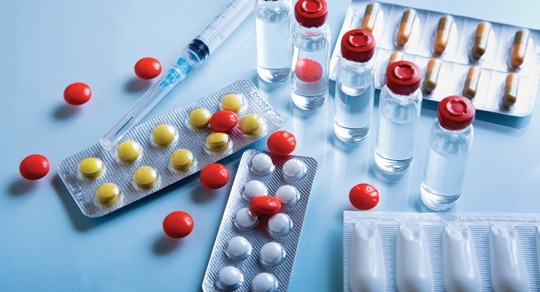#Anti-counterfeit Pharmaceutical Packaging Market Share
Explore tagged Tumblr posts
Text
Anti-counterfeit Pharmaceutical Packaging Market: Key Strategies for Drug Authentication

The pharmaceutical industry plays a critical role in public health by providing life-saving medications and treatments. However, this industry faces an ongoing challenge: counterfeit drugs. Counterfeit pharmaceuticals pose a significant threat to patients' health, as they may contain ineffective or harmful ingredients. To combat this issue, the pharmaceutical sector has embraced anti-counterfeit pharmaceutical packaging solutions. In this article, we will delve into the "Anti-counterfeit Pharmaceutical Packaging Market," exploring its growth drivers, current trends, key players, and future prospects.
The Need for Anti-counterfeit Pharmaceutical Packaging
Counterfeit pharmaceuticals are a global concern, with potentially devastating consequences. Patients relying on counterfeit drugs may experience worsened health conditions, adverse side effects, or even fatalities. The World Health Organization (WHO) estimates that around 10% of drugs available worldwide are counterfeit, with the percentage rising in some regions. To address this alarming issue, the pharmaceutical industry has adopted anti-counterfeit measures, and packaging is at the forefront of these efforts.
Market Growth Drivers
Stringent Regulatory Requirements: Regulatory bodies such as the U.S. Food and Drug Administration (FDA) and the European Medicines Agency (EMA) have implemented strict guidelines regarding pharmaceutical packaging and labeling to ensure product integrity and patient safety. Compliance with these regulations drives the adoption of anti-counterfeit packaging solutions market.
Increasing Counterfeit Drug Incidents: As counterfeit drug incidents continue to rise, pharmaceutical companies are compelled to invest in advanced packaging technologies to protect their brand reputation and, more importantly, patient well-being.
Advancements in Technology: Innovations in printing, tracking, and authentication technologies have made it easier for pharmaceutical companies to implement anti-counterfeit measures in their packaging. QR codes, holograms, tamper-evident seals, and unique serial numbers are just a few examples of such advancements.
Growing Pharmaceutical Industry: The pharmaceutical industry is expanding, driven by an aging population, increased healthcare spending, and the demand for new treatments. This growth, in turn, fuels the demand for effective anti-counterfeit packaging solutions.
Current Trends in the Market
Track-and-Trace Technologies: Pharmaceutical companies are increasingly adopting track-and-trace technologies to monitor the movement of their products throughout the supply chain. This ensures that medications reach their intended destination without tampering.
Smart Packaging: Smart packaging solutions, such as RFID (Radio-Frequency Identification) tags and NFC (Near-Field Communication) labels, enable real-time monitoring of products and enhance supply chain security.
Authentication Features: Innovative authentication features, like digital watermarks and 3D holograms, are being integrated into pharmaceutical packaging to make it more difficult for counterfeiters to replicate.
Blockchain in Pharmaceuticals: Blockchain technology is gaining traction in the pharmaceutical industry to create transparent and immutable records of a drug's journey from manufacturer to consumer. This helps in verifying the authenticity of pharmaceutical products.
Key Players in the Market
Several companies specialize in providing anti-counterfeit pharmaceutical packaging solutions. Some of the key players in this market include:
Avery Dennison Corporation: Known for its expertise in labeling and packaging materials, Avery Dennison offers a range of anti-counterfeit solutions, including tamper-evident labels and RFID tags.
CCL Industries Inc.: CCL Industries is a global leader in specialty packaging solutions, offering technologies such as brand protection labels and tamper-evident closures.
SICPA: SICPA specializes in secure traceability and authentication solutions, providing pharmaceutical companies with tools to combat counterfeit drugs effectively.
Essentra: Essentra focuses on providing packaging, authentication, and security solutions tailored to the pharmaceutical industry's needs.
Future Prospects
The anti-counterfeit pharmaceutical packaging market is poised for significant growth in the coming years. As the pharmaceutical industry expands and regulations become even more stringent, the demand for innovative packaging solutions will continue to rise. Furthermore, advancements in technology, including the integration of blockchain and artificial intelligence, will further enhance the effectiveness of anti-counterfeit measures.
In conclusion, the "Anti-counterfeit Pharmaceutical Packaging Market Growth" is essential for safeguarding public health and maintaining the integrity of the pharmaceutical industry. As counterfeit drug incidents persist, pharmaceutical companies will increasingly invest in advanced packaging solutions to protect their products and, most importantly, their patients. With evolving technology and a commitment to regulatory compliance, this market is set to play a pivotal role in ensuring the safety and efficacy of pharmaceutical products in the years to come.
#Anti-counterfeit Pharmaceutical Packaging Market Share#Anti-counterfeit Pharmaceutical Packaging Market Growth#Anti-counterfeit Pharmaceutical Packaging Market Demand
0 notes